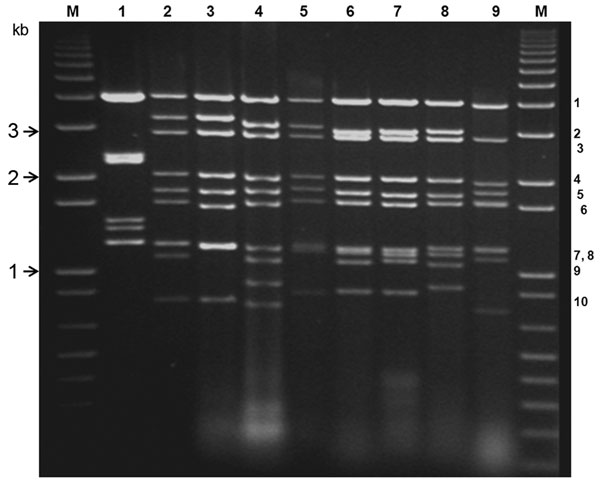Volume 17, Number 5—May 2011
Dispatch
Novel Bluetongue Virus Serotype from Kuwait
Figure 1

Figure 1. Electrophoretic analysis of genomic double-stranded RNAs from the Orbivirus species and mammalian orthoreoviruses. Bluetongue virus double stranded RNA preparations were analyzed by electrophoresis in a 1% agarose gel containing 0.5 μg/mL ethidium bromide and visualized by exposure to ultraviolet light. Genome segments are numbered, in order of decreasing molecular weight. DNA markers were run (lanes M) to enable estimation of molecular weights. Lane 1, orthoreovirus (MOR2004/01); 2, equine encephalosis virus (EEV-1/RSA1976/03); 3, African horse sickness virus (AHSV-1/RSArrah/01); 4, Palyam virus (PALV-SUD1982/03); 5, epizootic hemorrhagic disease virus (EHDV-4/ NIG1968/01); 6, bluetongue virus (BTV-15/RSArrrr/15); 7, bluetongue virus (BTV-26/KUW2010/02); 8, Tilligerry virus (TILV-AUS1978/03); 9, Chobar Gorge virus (CGV).